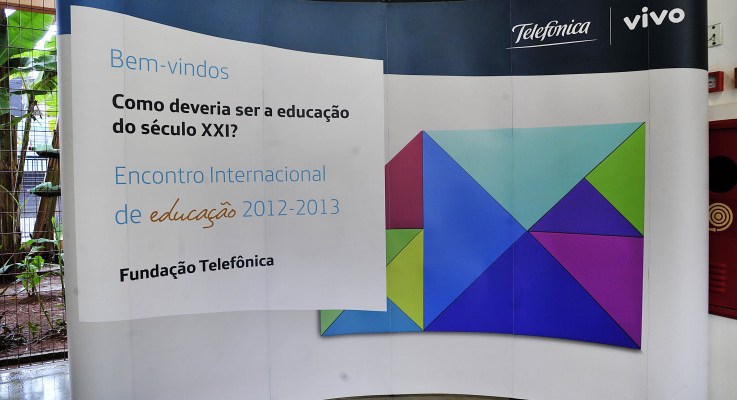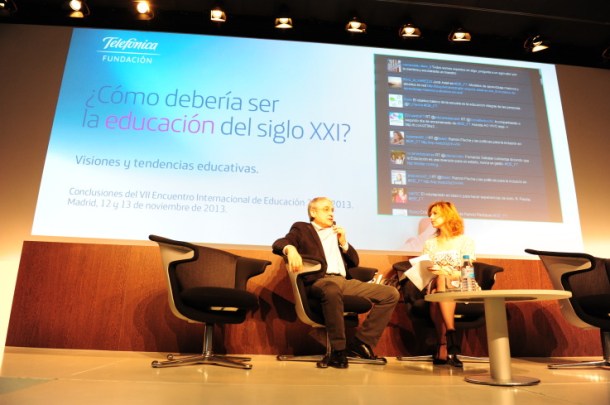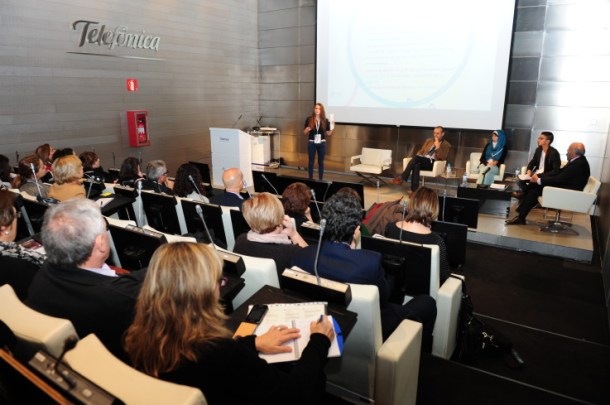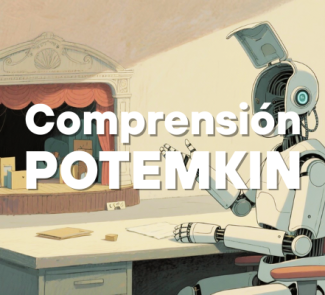Eighteen months ago, Fundación Telefónica opened a dialogue on what education in the 21st century should be like. Here are the key concepts.
It’s nobody’s fault; these are disruptive times in which we live, and it’s hard to predict where this world is headed, with its dizzying technological advances changing step virtually on a daily basis, flooding the reality that surrounds us like a tsunami.
In the field of education, the confusion generated by the recent digital revolution has generated a lot of doubts and a great degree of uncertainty; no one is sure what or how we should teach in this new century.
We are facing lots of new questions: What role should technology play in education? What is the teacher’s role in the new scenario? How does informal education help to prepare students to live in 21st-century society?
Fundación Telefónica wanted to answer the question of what education in the 21st century should be like, and so, over the last 18 months, it has been seeking answers through an open debate throughout Ibero-America with the 7th International Education Conference. Based on 200 virtual classroom sessions with more than 50,000 educators from 9 countries, 70 live events with more than 9,000 participants, and the contributions by 300 international speakers, 20 key factors have been identified for the educational success of the generations that are now beginning the learning process.
These 20 aspects that need to be taken into consideration when designing the education required in these times are summarised below:
– Educating citizens of the 21st century. Some call them «Knowmads», others «Millennials», but the labels don’t matter; what does matter is that modern society demands people who are creative, entrepreneurial, critical, digitally competent, sociable and who can adapt to diverse work environments.
– Promoting inclusion. Public educational policies must work to break down the social and cultural barriers that create inequality between people and groups, and also help to close the digital divide between those who use technology and those who do not.
– Institutional leadership. Digital technology has been around for some time now, and has been absorbed into all aspects of society. Education can’t stay outside this process, and it is the responsibility of educational institutions to lead the change.
– Collective intelligence. We are social beings and we move in an increasingly complex society. Technology must help students in the 21st century to squeeze the full potential from the collective intelligence that they can use to develop in the global world.
– Combination of technology, teaching and content. The modern teaching process must be based on these three elements, all combined in the right proportions. Technology amplifies the impact of teaching, but does not condition it.
– New ways of evaluation. Teaching with ICTs requires different teaching methodologies, which means that learning can’t be evaluated using the old systems; a new system must be developed that makes it possible to determine the degree of competence of students in the skills required to function in modern society.
– Dispel the myth of the digital native. The idea of the «digital native» has been very successful among the different gurus and visionaries of the so-called 2.0 sector, but the conclusion is just because a boy or girl is born into a digital society, there is nothing to guarantee that he or she will be able to make adequate use of technology “naturally”.
– Promote creativity. The educational system must encourage creativity of students, not repress it.
– Emotional education. The main purpose of education is for each student to achieve an optimum level of social and emotional well-being, which means that emotional education should occupy an important place in educational systems.
– Cooperation among families, schools and community. Education doesn’t correspond exclusively to educational institutions; learning can take place anywhere in society, and for this reason, there must be a connection and cooperation among families, schools and communities.
– Leadership without bureaucracy. Leadership as an educational institution must be focused on teaching and stay away from pure bureaucracy.
– Development of skills. Living in a digital society requires new skills that educational systems must develop (autonomy, adaptation to change and different environments, processing of information, etc.).
– The interests of students. Learning must take place naturally, starting with the interests of the students, taking into account everything that they already know, from a practical perspective and accepting mistakes to be redirected by the instructor.
– Teacher orienter. The new role of teachers is based on oriented and guiding students in the search of knowledge, as opposed to the old role in which they transmitted that knowledge.
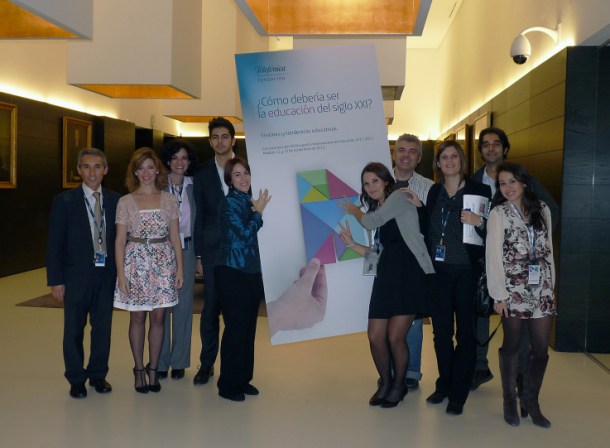
– Ecology of learning. The learning process is now conceived as an ecosystem that goes beyond the scope of school learning and includes the entire social environment of the student (school, family, society, networks, etc.).
– Variety of educational environments. In addition to formal teaching, the learning that takes place in non-formal or informal settings is increasing at a dizzying pace, and it is vital to consider the benefits of all of these educational environments.
– Interaction with content. Learning does not lie in content, but rather in the interactions that take place around it. Learning on the web through interactions must consist of aggregating, combining and putting knowledge into practice.
– Training adapted to demand. Society and schools must collaborate to adapt training to the social demands of the 21st century.
– Train citizens, not efficient professionals. The responsibility of the educational system should not be to train human resources that are only useful for one market, but rather to train citizens who are able to function at all social levels.
– Avoid technological anxiety. Technology is advancing at a breakneck pace and it is impossible to predict what type of technology there will be in the near future. What society needs to do is design what it wants education in the 21st century to be like, and the technology that will accompany the changes in education will be whatever is available when the time to implement those changes arrives.
